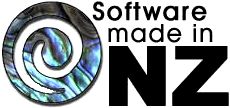
BizTerm™ is a telnet terminal emulator compatible with Windows 7 specifically designed for Pick Systems® D3® multidimensional database. It has mouse clickable zones, extensible screen size and graphics capability. This was important as D3 is a text-based database, using telnet as the client interface. Thanks to BizTerm, Crusader now has features that would not normally be possible.
BizTerm features a simple-to-use custom emulation, with keyboard encoding similar to the standard D3 "USA-101" definition. It provides the ability for D3 applications such as Crusader to display graphics, and launch programs on the user’s computer. The D3 terminal definition required for standard Pick® @function control is included.
Features
- Standard or customizable text colours
- True-blink, inverse and protected screen attributes
- On-screen graphics (from a file or web server)
- Automatic font scaling, so that text always fits on-screen
- Ability to capture screen output to a text file or printer
- Slave printing and file transfer
- Flashing graphic error alert for use by operators with hearing impairment
- Windows and DOS programs can be integrated with BizTerm and launched remotely
- Support for Automation included
- "Cookies" allow the server to save and retrieve user settings
- ActiveX architecture allows BizTerm to be hosted from a webpage
- User-programmable hotkeys
- Screen Hotspots let you use point-and-click in your text-based applications
- Application-defined toolbar lets your legacy application define its own toolbar buttons
- Security policies to prevent unauthorized commands from being carried out
Automation is a technology where applications can be controlled ("automated") by other applications. Each application which supports Automation makes available a set of programming interfaces to perform certain tasks. For example, a word processor would provide interfaces to create, format and print documents. A spreadsheet would provide mathematical, analytical and reporting tools, an email client would allow you to send and receive email, manage contacts and so on. Automation makes it possible to integrate the features from different applications and use them as part of your own custom solution, saving time and greatly increasing user productivity.
BizTerm makes Automation available to your D3 applications by providing a conduit between the D3 server and the Windows Automation libraries. Through BizTerm, your D3 applications can create instances of Automation objects on your user's desktop, and access their methods and properties. For example, you can create a hidden instance of Microsoft Word and format a document based on information in your D3 database, then either save or print the document.
To use Automation you can send terminal commands to BizTerm yourself, or you can use the PickBasic library provided. You must have knowledge of the Automation programming model, as well as detailed working knowledge of the application you want to automate.
A Hotspot is a clickable area of the screen which behaves like a pushbutton. If the user points to a hotspot with the mouse, the cursor will change into a hand and the hotspot will appear to pop out from the screen.
When a hotspot is clicked, it will send a pre-determined text command to the server. This lets you give a Windows "look and feel" to legacy applications which only understand text input. For example, in the menu above the user must enter "1", RETURN to select an application to work with. However, clicking on "Select Application" will also send the same command without the user needing to type anything.
Custom toolbars can be set up by the remote server such that custom commands are carried out when its buttons are pushed. This is another way to provide Windows features for legacy applications (see Hotspots).
Each toolbar button has a command string associated with it, which will be sent to the server if it is pressed. When adding a button to the toolbar you must also specify its tooltip, which will be shown if the user rests their mouse cursor on it for any length of time, and an image to use. BizTerm provides a set of default images. Alternatively you can specify the location of a bitmap file containing your own user-defined images.
A remote server can instruct BizTerm to run arbitrary commands on the user's computer, create Automation objects, read or set cookies and transfer files without the user's intervention. In some situations you may want to prevent this from occurring. Therefore, BizTerm has Security Policies which allow you to specify which actions a remote server is allowed to perform.
